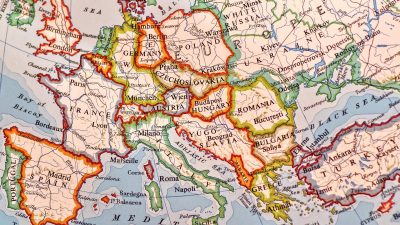Unveiling The Human And Political Cost Of Nature’s Fury
The 1963 Extremely Severe Cyclonic Storm remains one of the most destructive natural disasters to ever hit East Pakistan (now Bangladesh). Despite its massive toll, the storm is often overlooked compared to other high-profile events. Its devastating power and the aftermath left lasting scars on the region, with countless communities wiped out and families torn apart. The storm arrived with little warning, unleashing chaos and uncertainty across East Pakistan, leaving a trail of destruction in its wake. This tragedy serves as a poignant reminder of the unpredictable nature of such extreme weather events and the vulnerability of coastal areas.
The cyclone exposed East Pakistan’s vulnerability, particularly in the coastal regions where storms were common but often underestimated. The intensity of the 1963 storm took both residents and authorities by surprise. The lack of proper warning systems and inadequate disaster preparedness only intensified the disaster. The storm’s impact was both immediate and long-lasting, leaving the economy and infrastructure severely damaged and the people struggling to rebuild.
Nature’s Wrath: The 1963 Cyclone and Its Underrated Impact
The 1963 cyclone is remembered not just for its immediate destruction but also for its lasting consequences on the region’s social and economic fabric. While the immediate destruction was harrowing, the cyclone also exposed the weaknesses of a nation ill-prepared for such a disaster. Extensive flooding affected large parts of East Pakistan, leaving thousands stranded without shelter, food, or basic resources. The cyclone’s ferocious winds and heavy rains also decimated crops, exacerbating the already dire conditions for the region’s impoverished population.
One of the most significant yet often overlooked impacts was the deep emotional and social toll on the survivors. The loss of homes and loved ones left entire communities in shock and despair. The cyclone’s aftermath revealed how fragile the region’s economic and social structures were, with many survivors left with little more than the hope of rebuilding their lives from scratch.
Shocking Statistics of the 1963 Cyclone: Death, Injury, and Devastation
- Fatalities
The cyclone claimed between 10,000 and 12,000 lives, primarily due to drowning caused by the rising floodwaters. The storm’s sudden onset left many unable to escape the devastation. - Injuries and Displacement
Over 100,000 people were injured, with many suffering from broken bones, cuts, and illnesses due to the storm’s harsh conditions. Additionally, millions were displaced as entire villages were submerged or destroyed. - Infrastructure Damage
Roads, bridges, and telecommunication lines were severely damaged, complicating efforts to deliver relief and aid to the hardest-hit areas. This breakdown in infrastructure prolonged the recovery process and worsened the suffering of the affected populations.
The Controversial Government Response to the 1963 Cyclone
The government’s response to the 1963 cyclone has faced widespread criticism for being slow and ineffective. With limited communication tools and no coordinated disaster response system, local officials struggled to assess the extent of the damage and organise relief. Furthermore, the lack of early warning systems left many people in the dark about the incoming threat, resulting in widespread panic and confusion.
Adding to the controversy was the allegation that political concerns took precedence over disaster preparedness. The government’s focus on maintaining control over East Pakistan led to the diversion of critical resources away from the cyclone’s aftermath. This delayed response contributed to a slower recovery, further exacerbating the tragedy for those affected. The storm’s aftermath exposed glaring weaknesses in the country’s disaster management capabilities, leading to greater unrest and calls for reform.
The Economic Fallout of the 1963 Cyclone in East Pakistan
While the cyclone’s immediate impact was felt in terms of human loss and destruction, the longer-term economic consequences were equally severe. The storm destroyed essential crops such as rice and jute, vital to East Pakistan’s agricultural economy. The loss of these resources led to food shortages and economic hardship, particularly among the rural poor who relied on farming for their livelihood.
Moreover, the cyclone disrupted trade and transportation routes, further crippling the already fragile economy. The destruction of infrastructure made it difficult to transport goods or provide essential services, aggravating the situation and lengthening the recovery period. The cyclone’s economic toll highlighted the need for stronger disaster preparedness and response strategies to safeguard the future prosperity of the region.
Could the 1963 Cyclone Have Been Predicted? Experts Offer Surprising Insights
- Outdated Forecasting Technology
At the time, cyclone forecasting was rudimentary, with no access to satellite data or modern weather prediction methods. Experts later concluded that, given the technology available, it was impossible to fully predict the cyclone’s intensity or exact path. - The Lack of Early Warnings
One of the most critical failures was the absence of an effective early warning system. The cyclone struck with little notice, catching most people off guard and leaving them with little time to seek shelter or evacuate. - The Need for Better Preparedness
The aftermath of the cyclone demonstrated the urgent need for improved forecasting and early warning systems. The event served as a critical learning point for future disaster management, underscoring the importance of proactive measures in saving lives and minimising damage.
The Hidden Truth: What Really Happened After the 1963 Cyclone?
Various conspiracy theories have emerged over the years regarding the true extent of the cyclone’s impact and the response that followed. Some speculate that human actions, such as deforestation and poor urban planning, may have exacerbated the effects of the storm, particularly in relation to flooding. Others argue that the government’s slow response was due to political motives, as the authorities sought to downplay the scale of the disaster.
Rumours have circulated that the government may have intentionally underreported the devastation to avoid international scrutiny and political fallout. With rising tensions between East and West Pakistan at the time, there are claims that the government sought to minimise the crisis’s exposure. Although these theories remain speculative, they contribute to the ongoing debate over the government’s role in handling the aftermath of the storm.
Rebuilding East Pakistan: How the 1963 Cyclone Led to Change
The 1963 cyclone acted as a catalyst for significant reforms in disaster management practices in East Pakistan. In the wake of the disaster, the government recognised the urgent need to overhaul disaster preparedness and response systems. Efforts were made to improve forecasting technology, build better infrastructure, and develop coordinated national response plans to mitigate the impact of future cyclones.
Additionally, the cyclone’s aftermath highlighted the importance of community-based disaster preparedness. Local governments were encouraged to create evacuation plans, construct stronger shelters, and ensure that citizens were better equipped to deal with natural disasters. While progress was made, many of the improvements came too late for the survivors of the 1963 disaster.
A Nation Forever Changed: The 1963 Cyclone and Its Political Legacy
The 1963 cyclone had far-reaching political implications for East Pakistan. The failure of the government to respond effectively to the crisis deepened the growing divide between East and West Pakistan. The event exposed the central government’s inability to manage the disaster and highlighted the neglect felt by the people of East Pakistan, contributing to mounting political tensions.
The storm’s widespread devastation also garnered international attention, shining a spotlight on the region’s plight. This increased awareness and sympathy for East Pakistan’s situation helped fuel the independence movement, ultimately contributing to the political changes that followed. The cyclone’s legacy, though marked by tragedy, became a significant chapter in the path towards East Pakistan’s eventual independence.
Conclusion: The Enduring Impact of the 1963 Cyclone
The 1963 cyclone remains a defining moment in East Pakistan’s history. Its aftermath not only shaped the physical landscape but also left a lasting impact on the region’s social, economic, and political structures. The lessons learned from this disaster played a vital role in improving disaster management in Bangladesh, ensuring that future generations would be better prepared for such calamities. However, the scars of the 1963 event are still felt today, both in the memories of those who survived and in the ongoing efforts to protect coastal communities from similar threats.
The cyclone’s legacy is also political, as it exposed the deeper issues of governance and regional inequality, ultimately playing a part in the larger movement for East Pakistan’s independence. While the storm itself has long passed, its influence continues to shape the country’s approach to natural disasters and disaster management.
5 Short FAQs
- How many people died in the 1963 East Pakistan cyclone?
The cyclone resulted in approximately 10,000 to 12,000 fatalities, mostly due to drowning from the flooding. - What were the primary causes of death during the cyclone?
Drowning due to flooding was the leading cause of death, with many victims unable to escape the rising water. - How did the government respond to the 1963 cyclone?
The response was slow and disorganised, with relief efforts delayed due to poor communication and lack of preparedness. - Was the 1963 cyclone a common occurrence in East Pakistan?
Although cyclones were frequent, the severity and scale of the 1963 storm were exceptional. - How has the cyclone influenced modern disaster response strategies in Bangladesh?
The cyclone led to significant improvements in early warning systems and disaster preparedness to better protect vulnerable communities.
References:
“Cyclone Took 16,000 Lives”
1963 North Indian Ocean cyclone season”
“East Pakistan 1963




